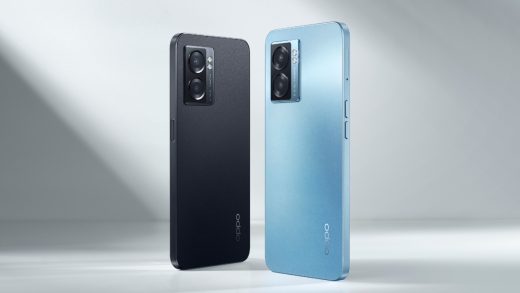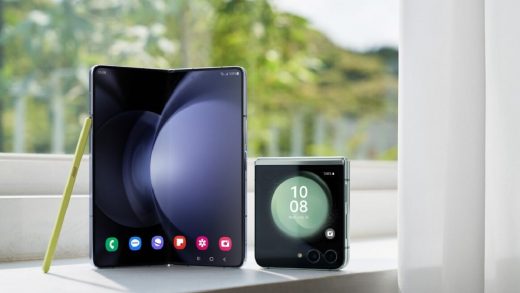![]()
Despite the numerous leaks ahead of its official announcement, Google still managed to leave behind several surprises for the launch of its new Pixel-branded products. The Google Pixel 8 and Pixel 8 Pro were launched alongside the new Pixel Watch 2 and Pixel Buds. While this year’s highlight was clearly the integration of artificial intelligence (AI) in many of Google’s native apps and services, it’s also nice to see how useful Google has managed to make AI for the casual user. I’m sure other Android smartphone brands will follow Google’s footsteps and build their own features based on AI and machine learning in the coming months.
With that said, the new phones aren’t just about AI. Unlike Apple, Google this year has upgraded the look and feel of its devices. Gone are the squared-off corners and curve-edge displays from past models. Google’s new Pixel 8 and Pixel 8 Pro now have a more rounded appearance which feels surprisingly comfortable to hold and also familiar, because it instantly reminded me of the original Google Pixel and Pixel XL.
The designs have clearly evolved from much older models but the visor-like camera module from the more recent Google Pixel smartphones has been retained. The camera module on both phones is still chunky and gathers dust quite easily. Another design element that will seem new to the new generation of Pixel adopters is the smooth matte finish of the rear glass panels on the Pixel 8 Pro. It brings back memories of the much-loved Pixel 3XL which also had a similar (but rough) matte glass rear panel.
Both smartphones also retain their IP68 rating for dust and water resistance.
![]()
Both the Google Pixel 8 and the Pixel 8 Pro come with the charging cable, SIM ejector tool and Type-A adaptor in the box
Inside, Google has gone with a new Tensor G3 SoC, which is built on the 4nm manufacturing process and should deliver better efficiency than the G2 on the Pixel 7 Pro. However, I’m more keen on finding out how Google has handled the thermals this year given that the Pixel 7 Pro ran hot when stressed.
This new processor, while not big on raw performance, is big on AI capabilities. Google explained that machine learning models on the Pixel 8 and Pixel 8 Pro are 10 times more complex compared to the older Pixel 6 (with Tensor) models. And, it will need all of its AI processing capabilities to chomp down and enable all the fancy new features Google has baked into its new phones.
![]()
The Google Pixel 8 Pro model gets a matte-finished rear glass panel with chrome-finished aluminium frame
This ranges from clear phone calls to faster photo retouching, better video recording (something that was much-needed), and even new tools like Magic Audio Eraser which removes distracting sounds (or noisy people) from a video recording. The processor also helps with the new secure Face Unlock feature which surprisingly uses a regular selfie camera for secure (Class 3) biometric authentication.
Unlike the past models, it can be used for authorising banking transactions as well. Google still left behind the optical fingerprint reader which kind of convinced me that it may not work at all times or conditions (more about this coming in the review). But this indeed seems like the first steps towards developing something similar to Apple’s Face ID, minus all the added hardware.
For the ones who are both confused and curious about what you will get when you unbox your shiny new Pixel 8 or 8 Pro. Here’s a short list of features that are currently available and those that are yet to show up on our review units.
Available features:
- Magic Editor
- Magic Audio Eraser
- AI Wallpaper
- Face Unlock
- Pro camera controls
- Object Temperature Sensor (app)
- Best Take
Coming soon:
- Video Boost
- Night Sight Video
- Body temperature measurement
![]()
The Google Pixel 8 Pro (right) offers high-resolution sensors on all of its rear cameras this year
Coming to the cameras, Google has upgraded the primary and selfie cameras (because Face Unlock) but seems to have retained the ultra-wide from the Pixel 7. The Pixel 8 Pro has received the bigger share of camera upgrades with high-resolution sensors on all-three rear-facing cameras.
There’s a new 50-megapixel primary camera, a new 48-megapixel telephoto camera with 5X optical zoom and another 48-megapixel ultra-wide camera as well, which replaces the 12-megapixel camera on the Pixel 7 Pro. Like the Pixel 8, the selfie camera too has been replaced (for Face Unlock) although it does not seem like much of an upgrade in terms of resolution. There’s also a new temperature sensor next to the Pixel 8 Pro’s cameras which can be used to measure the surface temperature of objects.
The batteries too have received minor upgrades. The Pixel 8 Pro battery gets a 50mAh bump over the Pixel 7 Pro bringing it to 5,050mAh. The Pixel 8 gets a bigger boost from the 4,355mAh battery on the Pixel 7 to a bigger 4,575mAh unit. Charging speeds have also gone up from 20W to 27W wired charging on the Pixel 8, and from 23W to 30W on the Pixel 8 Pro. Thankfully, Google has retained wireless charging on both devices.
![]()
The Google Pixel 8 Pro’s camera set up also includes a temperature sensor which sits below its LED flash unit
As you can tell from the new AI-related upgrades and hardware performance upgrades, it is easy to forget that Pixel devices have always been about being first in line to receive the latest software updates. The new Pixel 8 and Pixel 8 Pro are no different and come with Android 14 and all its Pixel customisations out of the box. Google also announced that it will provide seven years of OS, security and juicy Pixel Drops as well, which is a massive commitment from Google. But will that battery even last that long? Well, Google seems to have the spares situation covered for the same duration too.
While all of the above features and commitments appear to raise the bar for both Android and even iOS-powered smartphones, Google has also raised the bar when it comes to pricing this year. With the Pixel 8 starting from Rs. 75,999 and the Pixel 8 Pro priced at Rs. 1,06,999, these are indeed Google’s most expensive smartphones to reach India. The Pixel 8 Pro seems to worry me a bit more as that is the price for the one and only 128GB variant in India.
Do stay tuned for our detailed reviews to find out if they are worthy of their price tags or should you upgrade to something else this festive season.


